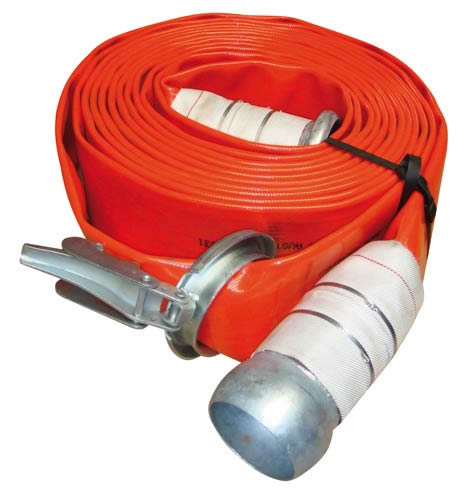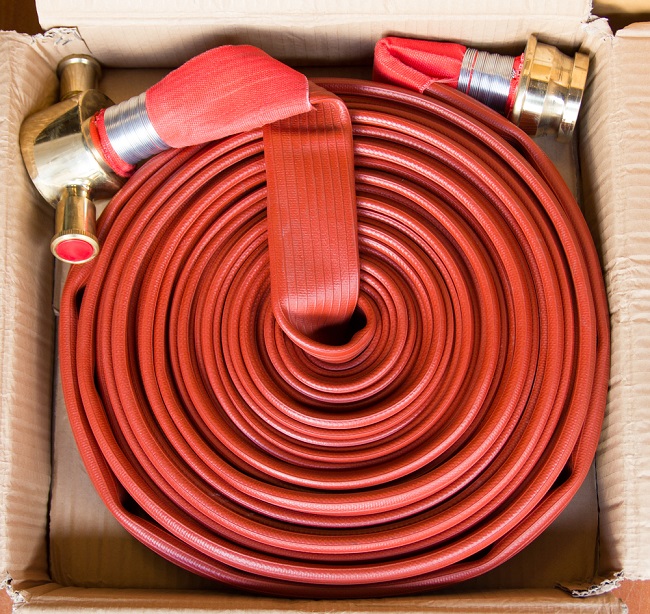Layflat hoses are widely used in fire fighting applications and are still the best in terms of portability, compactness, ability to resist high pressure and ease of use.
Technology to manufacture hoses has advanced to a high degree resulting in premium quality layflat hoses. Common features of such flat water hoses:

- Four layer hoses made with synthetic circular woven construction with synthetic rubber, made in a co-extrusion process. The co-extrusion process assures smooth inner and outer surfaces for least flow resistance, resistance to kinks and superior handling properties as well as durability.
- Not everyone may require a four layer hose and for them the single jacket hose with polymer lining either in polyurethane, or similar, is good enough.
- Sitting in between is the double jacket lightweight hose with a double jacket with compactness as its main feature, added with extra layers of rubber and polymer to ensure optimum performance.
These types of flat water hoses are mainly used in fire-fighting applications. There are other layflat hoses made entirely of polymer, mainly used for irrigation or for use in compressed air delivery. When it comes to fire fighting where reliability and ease of handling are of prime importance then braided or spun reinforced flat hoses are the first choice. These flat hoses are flexible enough to be used during any emergency and they can also resist high water pressure and corrosions.
Layflat hoses for general applications:
- Flat water hoses are versatile in that these can be folded into a roll and stored neatly.
- Hoses made of polyurethane find wide ranging uses in chemical pumping, oil pumping and water pumping, along with industrial segments like in irrigation and also in fuel transfer.
- Flat hoses also find use in distribution of slurry in industrial environments and for distribution of fertilizer in agricultural fields. In such cases abrasion resistance is a prime requirement with such hoses being made of reinforced polyester woven braid with polyurethane lamination with a high tensile strength and resistance to bursting at high pressures.
The layflat hose should be designed well so that they can be manipulated very well:

While these end uses can also make do with other types of hoses, for fire fighting nothing quite matches the versatility of quality flat water hoses. Even within this category there are different types:
- Single layer of woven fabric with rubber or polymer lamination for occasional use and where lightweight is of primary importance;
- Jacketed hoses with two layers of woven polyester fabric with rubber or elastomer layering inside and outside bonded with leak-proof features.
- Flat water hoses can also be made using a through the weave extrusion process. Instead of simple lamination, the rubber forms a bond through the fabric weave.
Selecting the right layflat hose
With so many types and qualities available it is easy to go wrong and decide on price alone. This would not suit the purpose. Selection of hose is based on these considerations:
- Inside and outside diameter of hose keeping in mind flow rate, volume delivery and distance.
- External condition and types of use must also be considered. A hose may be laid out and remain static as in agricultural drip irrigation systems or the hose may be frequently coiled up and wound and then unwound and used again in various conditions. In this case flexibility, ability to resist kinking and abrasion resistance are equally important considerations.
Finding the right manufacturer of flat water hoses who can supply variety as well as guide buyers is the first thing before one proceeds with the process of purchase.







